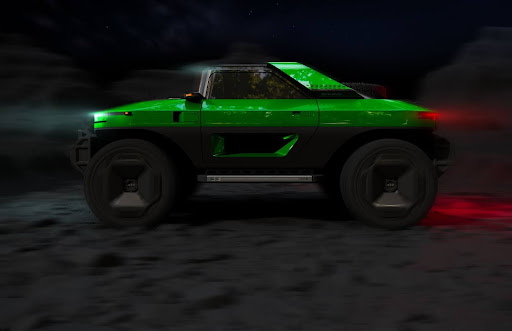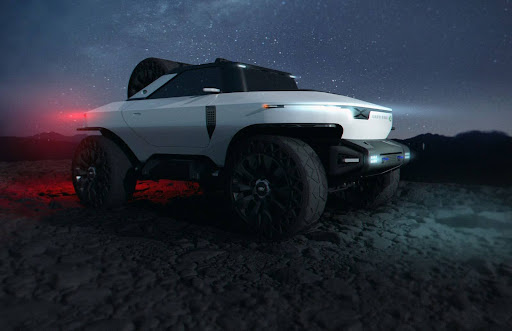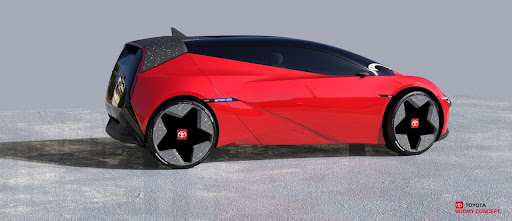Yisong “Rocky” Jiang, a transportation designer known for his integration of avant-garde aesthetics and practical innovation, recently shared his point of view on the cutting-edge technologies transforming the current landscape of automotive design. As a Senior Exterior Designer at Slate Motor / Re:Build Manufacturing, Jiang is at the beacon of shaping the future of mobility, crafting vehicle designs that are as sustainable as well as visually captivating.
Jiang’s journey began from his early fascination with automotive design in China, to his current role in Los Angeles, underscores the global nature of the industry and the importance of a strong educational foundation. He holds a Bachelor of Science in Transportation Design from the prestigious ArtCenter College of Design, where he honed his skills in the integral areas of sketching, meticulous 3D modeling, and comprehensive design research. This rigorous training provided the basis for his impactful career. Since then, he is the winner of multiple Muse Design Awards for the conceptual design category of transportation design, a London Design Award and an IDPA Japan Design Award.
Prior to his current role, Jiang received valuable experience at both established OEMs and innovative startups, including Fisker Inc. His contributions and insights spanned the entire vehicle design process, from initial concept ideation and detailed digital modeling to close collaboration with multidisciplinary teams to bring his visionary designs into fruition. He is recognized as a prominent voice in automotive design, known for his distinctive methodology that seamlessly blends brand identity, user necessities, and the crucial considerations of manufacturability. His portfolio showcases a remarkable versatility and creative flair by consistently pushing boundaries in the ever-evolving landscape of mobility solutions.
Beyond the studio, Jiang draws inspiration from a wide, varied range of sources, including art, architecture, and cutting-edge technology, channeling these influences into creations that possess both compelling form and practical functionality. In a recent conversation, he offered a glimpse into his design philosophy and the technologies that are pushing the limits of what’s possible in automotive design.
The Allure of Diverse Design Challenges
When inquired about his preferred type of car to design, Jiang eschews a specific preference, highlighting the unique appeal of each project. “Personally, I don’t have a specific car proportion I prefer to design,” he explained. “I enjoy the challenge of balancing performance, functionality, and style, all while keeping sustainability in mind.” This holistic perspective is central to his design quintessence.
He explains, “Whether it’s a sleek city car or a rugged off-road SUV, I love designing vehicles that offer unique experiences for the user. It’s not simply about creating something that just looks good, but something that also resonates emotionally with the driver.”
Jiang’s ethos extends far beyond mere aesthetics, emphasizing the importance of the driver’s experience. “I focus on designing cars that feel intuitive and connected, making the experience much more enjoyable and meaningful,” he stated. “The opportunity to fuse new technologies with great design and create an emotional connection is what truly excites me the most.” This passion for creating vehicles that are not just functional but also emotionally engaging underscores his innovative approach to design.
Autonomous Driving: A Paradigm Shift
Jiang identified autonomous vehicle driving as one of the most remarkable innovations currently shaping the automotive industry. “One of the coolest innovations in cars right now is the autonomous driving feature,” he noted. “Self-driving tech is progressing fast, with cars getting smarter every day.” He highlighted existing advancements, stating: “Features like adaptive cruise control and lane-keeping assist are already improving safety, and soon, fully autonomous vehicles might take over the driving for us in the future.”
The potential impact of autonomous driving exceeds far beyond convenience. “It’s all about making driving easier, safer, and more efficient, freeing up time and changing the way we use cars in our daily lives,” Jiang explained. This transformative technology promises to reshape our relationship with vehicles, turning them into mobile platforms for work, leisure, and connectivity.
The AI Revolution in Car Design
The immersion of Artificial Intelligence (AI) is profoundly impacting the car design process, according to Jiang. “AI is really changing the game in car design,” he asserted. “It helps speed up the design process by using algorithms to generate and refine ideas faster.” This acceleration allows designers to explore a wider, varied range of options and refine their concepts with greater efficiency.
Beyond idea generation, AI is also enhancing prototyping and testing. “Tech-like augmented reality (AR) is also making it much easier to prototype and test cars, cutting down on time and improving efficiency,” Jiang added. AR allows designers to overlay digital models onto physical prototypes, enabling them to evaluate design elements in a real-world context without the need for costly and time-consuming physical iterations.
The combined effect of AI and other emerging technologies is very key. “Overall, AI and new tech are helping us create smarter, more sustainable cars that are better for the environment and much more user-friendly,” Jiang explains. This holistic perspective of design, driven by technology, promises to create vehicles that are not only aesthetically pleasing but also environmentally responsible and intuitively designed.
Virtual Reality: A Game-Changer for Designers
Jiang emphasized the transformative role of Virtual Reality (VR) in the design process. “VR (Virtual Reality) is a game-changer for us as designers,” he stated. He contrasted the current process with past practices, explaining, “In the past, we relied heavily on clay models to evaluate designs at full size. While clay is still a part of the process, VR lets us jump into our designs before they’re even built.”
This ability to immerse oneself in a virtual model offers unprecedented insights. “We can see everything from every angle and make adjustments in real time,” Jiang explained. He further highlighted the practical benefits: “It’s especially helpful for checking proportions, comfort, and user experience, all without needing a type of physical prototype.”
The advantages of VR extend far beyond visual assessment. “VR speeds up the design process, helps us catch issues early, and makes collaboration much easier,” Jiang pointed out. “It’s an essential, unique tool for experimenting and refining designs quickly.” This acceleration and enhanced collaboration are significantly changing the design workflow and fostering greater innovation.
Yisong “Rocky” Jiang’s insights underline the dynamic interplay between cutting-edge technology and creative design in the automotive industry. His approach underscores the importance of embracing new tools and methodologies to create vehicles that are not only aesthetically compelling but also technologically advanced, sustainable, and emotionally resonant. As the automotive landscape continues to evolve, designers like Jiang will be vital in shaping the future of mobility.































